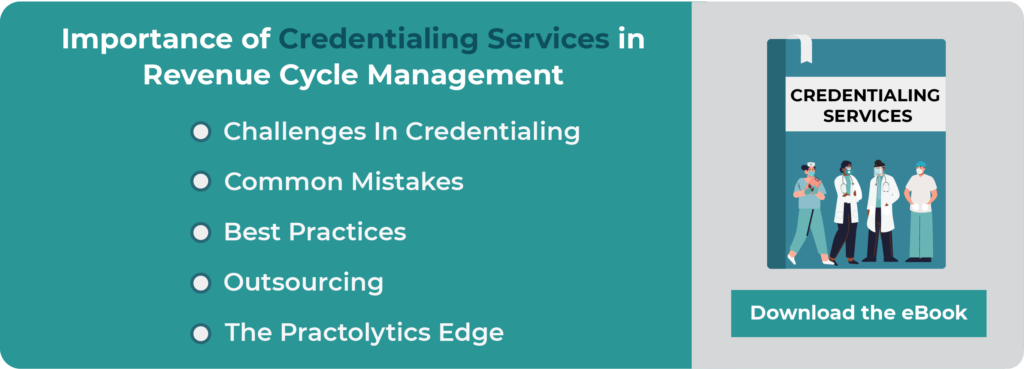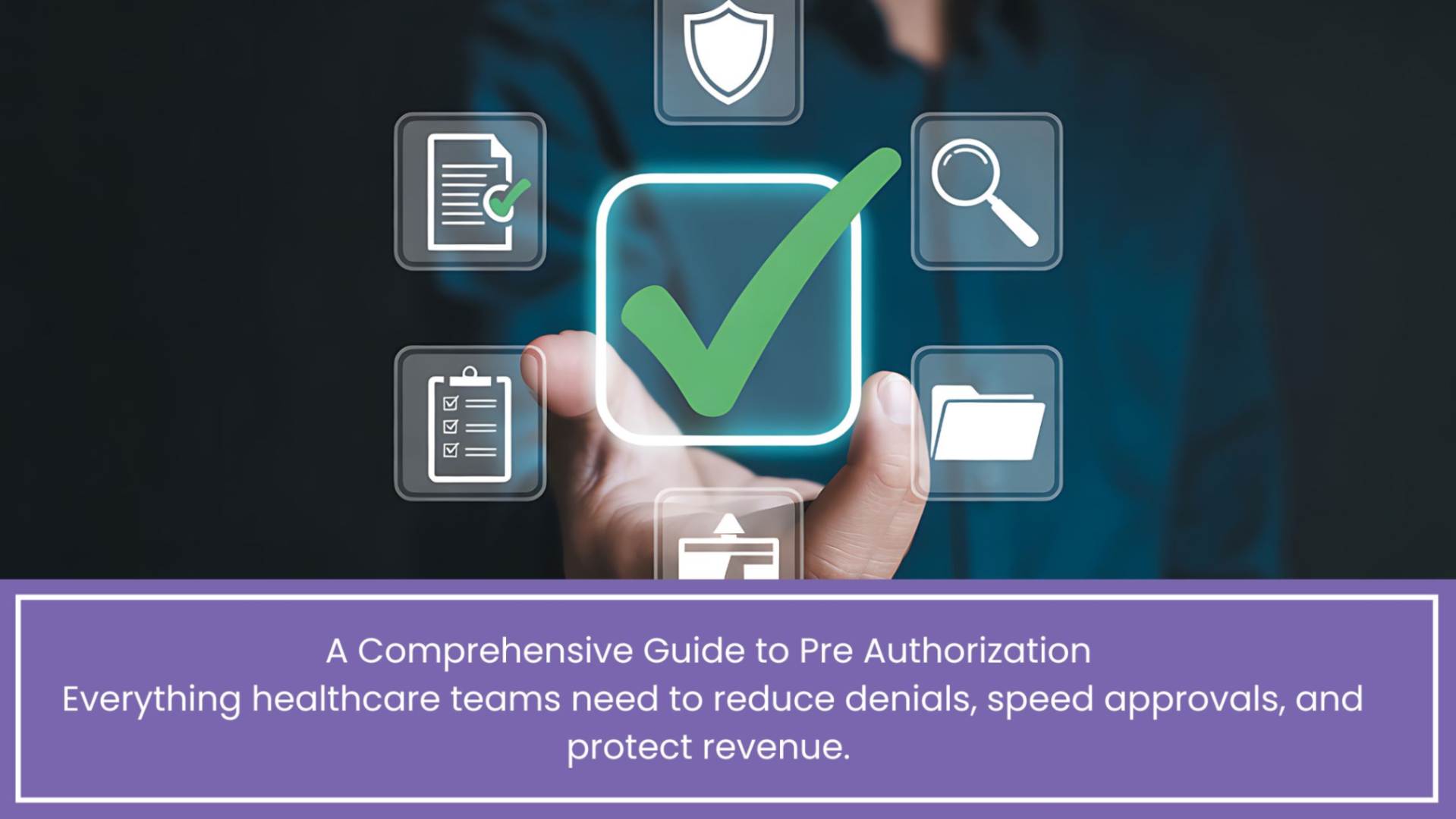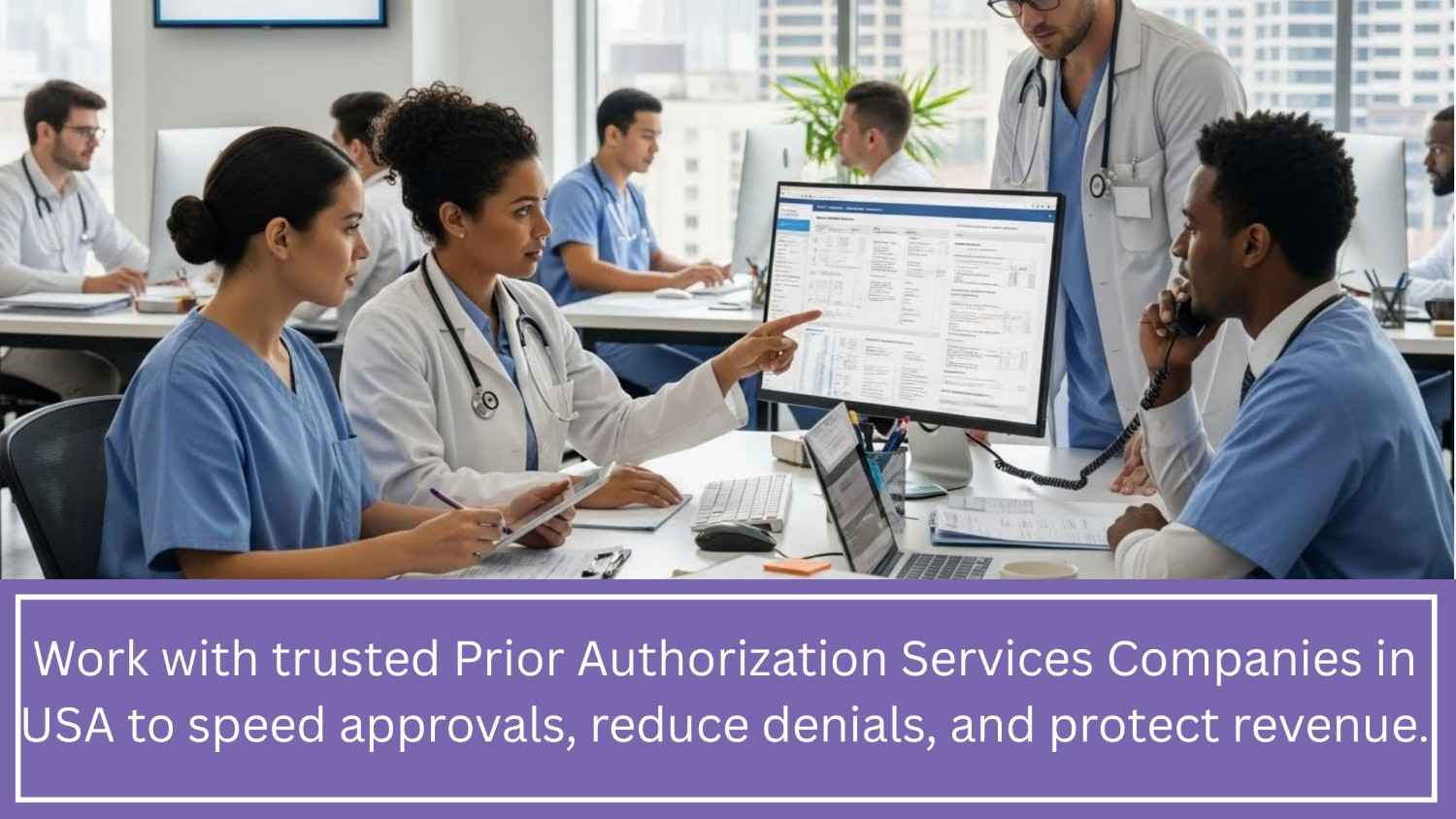Credentialing Innovations for Specialists
Credentialing has always been a pain—lots of forms, long waits, and tons of stress. For specialists like oncologists and cardiologists, those delays hit even harder. But the good news? 2025 is bringing real change. Smarter tech, automation, and easy-to-use dashboards mean faster approvals and fewer mistakes. And when practices team up with outsourcing experts, the burden finally gets lighter. No more chasing updates or losing valuable time. In this blog, Practolytics shares how credentialing is getting simpler, why it matters so much for specialists, and how these changes help both practices and patients.
Credentialing has always felt like one of those never-ending headaches in healthcare. It slows specialists down, eats into practice staff’s time, and delays when patients can actually get care. But 2025 is shaping up to be a turning point. For oncologists, cardiologists, and other specialty providers, credentialing is finally starting to look less like a pile of paperwork and more like a smoother process that actually works.
With over two decades of experience, supporting 28+ medical specialties, and processing more than 5 million claims every year, Practolytics has seen how much of a burden credentialing can be for practices. We’ve also seen how new innovations are reshaping the landscape. This blog breaks down how credentialing innovations for specialists is evolving in 2025, why it matters for practices, and how outsourcing is helping keep things manageable.
Table of Contents
What are the changes in Credentialing in 2025?
For years, credentialing meant drowning in forms, making endless phone calls, and waiting months before providers could even see patients under certain insurance networks. Specialists, who often deal with urgent cases, felt the delays the hardest. A patient waiting to see a cardiologist or oncologist simply can’t afford months of back and forth.
Now the picture looks different. Automated tools check applications before they’re submitted. Dashboards allow practices to track progress in real time. Systems can even send alerts when extra documents are needed so nothing gets missed. It’s not flawless, but the process is faster, smoother, and far more predictable.
Then vs. Now: How Credentialing Has Shifted?
Credentialing Before and After Innovation
|
Step |
Before |
2025 Innovation |
|
Document Handling |
Stacks of forms, faxes, repeat requests |
Centralized digital uploads with AI checks |
|
Communication with Payers |
Hours on the phone, unclear timelines |
Automated portals, instant status updates |
|
Error Management |
Mistakes caught weeks later |
Real-time error detection and fixes |
|
Average Turnaround |
90–120 days |
30–60 days in many cases |
|
Staff Involvement |
Large teams tied up full-time |
Smaller teams supported by automation/outsourcing |
This shift makes a real difference. Faster credentialing means patients are seen sooner, claims get submitted quicker, and revenue starts flowing without painful interruptions.
Why Specialists Feel It the Most?
Specialists don’t operate like primary care. Oncology practices often juggle multiple payer contracts for advanced treatments. Cardiologists deal with complex procedures and diagnostics that require specific coding and approvals. When credentialing stalls, the effects are immediate: appointments are delayed, treatments are pushed back, and practices lose revenue.
That’s why the 2025 innovations aren’t just “nice to have.” They’re essential. They keep specialty practices competitive, protect income, and—most importantly—ensure patients don’t face unnecessary delays in accessing care.
Rise of Data-Driven Credentialing
One of the most exciting shifts happening right now is the use of data. In the past, practices only discovered issues once the damage was already done. Today, modern platforms track progress, highlight trends, and even predict potential problems before they cause delays.
Advantage of Data-Driven Credentialing
|
Traditional Credentialing |
Credentialing in 2025 |
|
Problems only spotted later |
Predictive analytics flag issues early |
|
Staff unsure of timelines |
Dashboards track progress clearly |
|
Financial impact seen too late |
Real-time revenue tracking |
These insights let practices plan better, allocate resources smarter, and keep cash flow steady instead of scrambling after problems surface.
Human Side of Faster Credentialing
It’s easy to focus on the tech side, but the biggest impact is human. Faster credentialing means specialists join networks sooner. Patients can book their appointments without unnecessary waiting. Staff spend less time buried in paperwork and more time helping with clinical operations. And revenue flows more predictably, giving practices stability to grow.
The goal isn’t to cut people out of the process—it’s to free them up. Automation takes care of repetitive tasks while experts focus on compliance, payer relationships, and big-picture strategies.
Outsourcing: A Game-Changer for Practices
Even with all these tools, credentialing is still complex. Every payer has its quirks. Rules keep changing. Timelines shift. For busy specialty practices, managing it in-house can still feel overwhelming.
That’s why outsourcing has become so valuable. Instead of stretching staff thin, practices hand off the heavy lifting to experienced partners who deal with credentialing daily. This cuts delays, reduces errors, and keeps revenue on track.
Why Practices Are Outsourcing Credentialing?
|
Challenge |
How Outsourcing Helps |
|
Heavy admin burden |
Experts handle the process end-to-end |
|
Frequent payer rule changes |
Specialists stay updated on requirements |
|
Risk of costly mistakes |
Proactive checks reduce errors |
|
Staff stretched thin |
Practice teams focus on patient care |
With outsourcing, practices don’t just gain efficiency—they gain peace of mind. Credentialing no longer stalls growth or disrupts revenue.
Looking Ahead: Beyond 2025
2025 is already showing us a different side of credentialing, but the future could be even more seamless. Industry-wide standardization, secure databases, and advanced verification tools may one day allow providers to get credentialed across multiple payers instantly. Technologies like blockchain could eventually make repeated submissions a thing of the past.
We’re not there yet, but the direction is clear. Each year, we’re moving toward a system where credentialing is background work—not a barrier to patient care or cash flow.
Why Credentialing Really Matters for Specialists?
For most specialists, credentialing isn’t just another item in the paperwork pile—it’s the lifeline of the practice. It decides how quickly you can see patients, how fast claims get paid, and whether your operations keep running without hiccups.
In fields like oncology and cardiology, delays aren’t just inconvenient. They can be harmful. A patient waiting for chemotherapy or a heart procedure doesn’t have weeks to spare while an application drags through approvals. Every extra day means postponed care, unnecessary stress, and revenue that’s stuck in limbo. That’s why credentialing is far more than an administrative task—it’s directly tied to patient outcomes and practice stability.
New Tools Changing the Game in 2025
Thankfully, credentialing in 2025 doesn’t look like it did in the past. Technology is transforming how practices move through the process. Automation is cutting down on errors that used to drag things out for weeks. Instead of endless back-and-forth corrections, systems now flag issues in real time so applications can keep moving forward without stalling.
But even with fewer errors, another headache has always remained—the waiting. You send in paperwork, follow up with payers, and then… silence. Sometimes it feels like everything just disappears into a black hole. You’re left guessing how long it will take or scrambling when a payer suddenly asks for “one more document” at the last minute.
That’s where data insights are changing the game. With dashboards and tracking tools, practices finally get some much-needed visibility into the process. Instead of chasing updates through endless calls or emails, you can log in and see exactly where things stand. Is the application under review? Did something get flagged? How much longer until approval? The answers are right in front of you.
For staff, this shift is a total game-changer. Instead of spending hours chasing updates, you just check the dashboard and you’ve got your answers. No more last-minute surprises, no more wasted energy trying to “guess” what’s happening. You can plan better, set expectations with providers, and keep the clinic running without unnecessary stress.
At the end of the day, credentialing will probably never be anyone’s favorite part of running a practice. But with this kind of visibility, it finally feels like something you’re in control of—not something that’s controlling you.
Why Outsourcing Has Become a Smart Move?
One of the biggest changes we’re seeing in credentialing right now is the rise of outsourcing. More and more specialty practices—especially in high-stakes fields like oncology and cardiology—are realizing that bringing in outside experts to handle credentialing isn’t just convenient. It’s a smart move that changes the way their practice runs day to day.
Think about everything credentialing requires. It’s not a quick task you squeeze in between patient calls or scheduling. It’s practically a full-time job. There are forms to complete, endless documents to track, phone calls with payers, and those frustrating little errors that can hold things up for weeks. When all of that lands on a staff that’s already juggling a busy clinic, burnout and mistakes aren’t just possible—they’re almost guaranteed.
That’s where outsourcing turns the tables. Instead of stretching your own team thin, you hand the process over to people who do this work every single day. These are specialists who know the ins and outs of payer requirements, understand what red flags to look for, and can resolve issues long before they snowball into big delays. The payoff is huge: approvals come faster, mistakes get minimized, and your in-house staff finally gets to focus on what they were hired to do—supporting patients.
For specialists, this difference can’t be overstated. In oncology and cardiology especially, time isn’t a luxury. A delay in credentialing doesn’t just mean postponed payments; it can mean patients waiting longer for treatment they urgently need. Outsourcing isn’t about handing off “busy work.” It’s about protecting your patients and securing your revenue stream at the same time.
Wrapping It Up:
At the end of the day, credentialing will never completely disappear—it’s a requirement in healthcare. But the way we handle it is shifting. In 2025, practices have real options: smarter technology, better insights, and the ability to outsource to experienced teams who know how to get it done right.
For specialists, that’s huge. It means patients get access to care faster. It means fewer financial disruptions. And it means your staff can finally breathe, knowing credentialing is in safe hands.
At Practolytics, this is exactly where we step in. With more than 20 years of experience, working across 28+ specialties and supporting over 1,400 providers, we know credentialing inside and out. We take on the burden so you don’t have to. Because when credentialing works smoothly, you get to focus on what truly matters—delivering care to patients who need it most.
Talk to Medical Billing Expert Today — Get a Free Demo Now!






